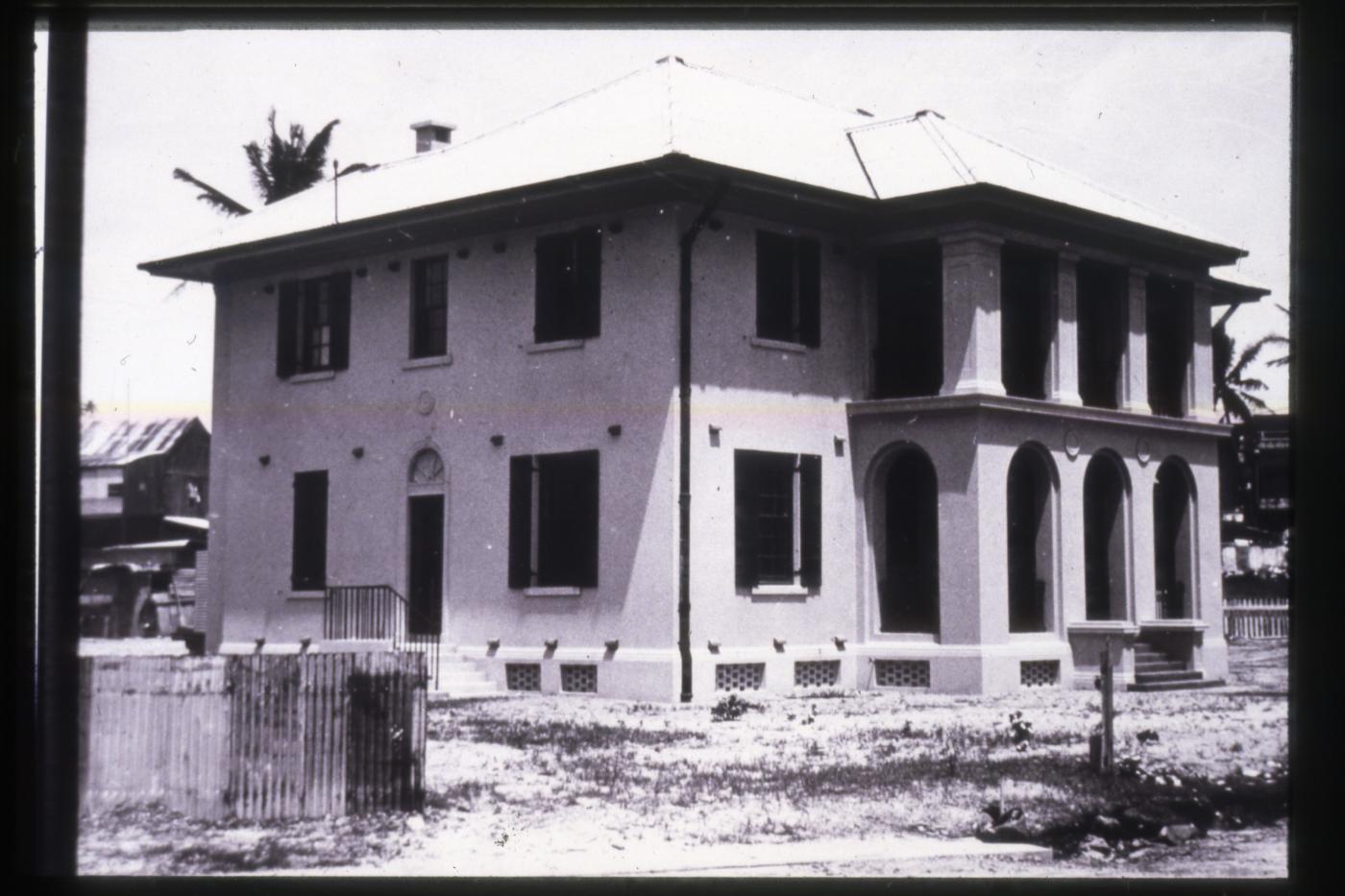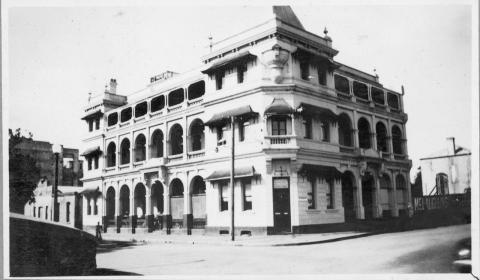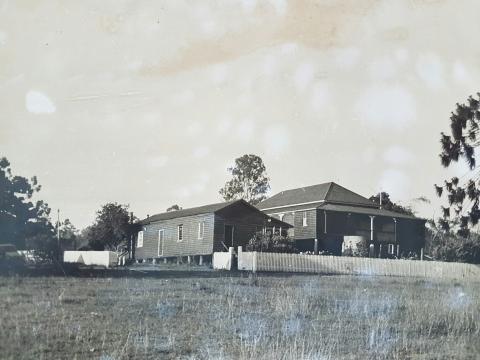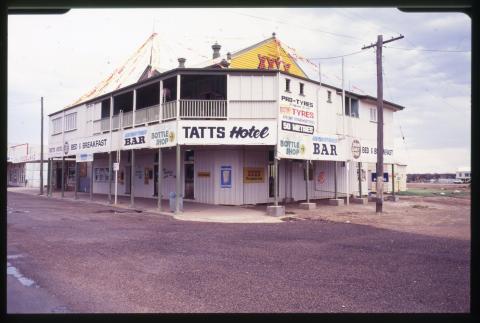
- News of the day
-
Queenslander, Saturday 16 January 1892, page 111
Custom-house at Thursday Island.
A deputation consisting of the Hon. E.B. Forrest, Messrs. J. Forsyth, A.A. MacDiarmid, and J. Hamilton, M.L.A., interviewed the Colonial Treasurer on Tuesday in connection with the removal of the Custom-house at Thursday Island to the new jetty. Mr. Hamilton, who introduced the deputation, said that the removal of the Custom-house from the old site had been objected to by all the business men on the island, and would cause continual loss of time and inconvenience to the whole business community. The jetty business would not be improved, and the Government offices would be divided by the removal, as they were all, with the exception of the post and telegraph office, on a 40-acre Government reserve situated three-quarters of a mile from the jetty.
The Treasurer said that after having expended £40,000 on the construction of a jetty he thought it reasonable that the Custom-house should be built alongside of it.
Mr. Forrest said he saw no reason whatever why a Custom-house should be planted alongside a jetty, that the site should be the most convenient one for the business people of the town.
Messrs. MacDiarmid and Forsyth also urged that the convenience of the business people should be studied before all other considerations, and that no satisfactory reason had been shown in support of the removal.
The Treasurer said that he considered the Custom-house was suitably situated, and he was not inclined to have it removed. The deputation thanked the Minister and withdrew.
- Background
-
Customs service records indicate that in 1877 a 'Port of Entry and Clearance' was gazetted at Thursday Island on 24 November. Mr H.M. Chester was appointed Customs Sub-Collector and Harbour Master in 1877 and by 1884 the port was gazetted as a warehouse facility. "The port flourished in its early years and a staff of up to six officers was necessary. In 1885 the first Customs House was erected at a cost of £797. In 1890 the Sub-Collectors residence was built at a cost of £1,076." The building was constructed of timber on a platform on short stumps. It was single storeyed, with a verandah on all sides and contained a public counter and 'long room' office, a private Sub-Collectors office and a public office with cashiers window. This Customs House was located on the corner of Douglas and Hastings streets. Accommodation for a growing staff was provided by removing four cottages from Sea Hill near Rockhampton to Thursday Island in 1895. A Tidewaiters cottage was built in 1897.
The main activity in the port was pearl handling. There were numerous Asian and Japanese pearl luggers active in the waters of Torres Strait and it was the customs officers' duty to track and control these and the many trading vessels which stopped at Port Kennedy to refuel with coal, trade and bring immigrants. The ports activities can be gauged from the fact that revenue for the financial year 1879/80 was £2,493 while twenty years later in 1899/1900 it had grown to £19,411. After World War I, the pearling industry quickly returned to its former activity level with sixty luggers active in the Strait. Customs records show reference to "... the important port of Thursday Island, with its timber Customs House, provided a major gateway to Australia, often being the first port of call for ships from Asia."
In 1938 the importance of the port was confirmed once again when a new two storey Customs House was erected. Built of brick and concrete, its ground floor served as the customs office while the second storey served as the Sub-collectors residence. The building cost £9,860 and was one of the most prominent landmarks on the island. It was located on the land directly beside the original timber customs house which was then removed.
Shortly after construction of the new customs house in 1939, war was declared. At the end of January 1942, Thursday Island was evacuated of its non-essential inhabitants. Stores were closing and the Customs officers now had to "do our own cooking, housework, washing, messages if we require anything, nothing is delivered." Gauld reported that "the office work has fallen to practically nil and will probably remain at that from now on." Late in 1942 the military, now in command of the Torres Straight, took control of the Customs House and used it as the residence for the Commander of the Torres Force for the remainder of World War II.
The Customs House returned to the Customs Service in 1946 when military control of Thursday Island was relinquished. The building had stood empty for some months since the Torres Force Commander left it in 1945. Early in 1946, the Sub-Collector for Cairns, M.J. Ryan, visited Thursday Island to inspect the buildings and general situation. He noted, "[a] number of indentured Malay people continue to live in Thursday Island and the place is often an open door to the East." He was also of the opinion that an officer should be detailed for duty at Thursday Island to look after the Customs interests, perform immigration duties and provide facilities under the Navigation Act and Merchant Shipping Act.
Over the years the Customs Service on Thursday Island has been involved in the various Customs duties as determined by the Governments of the day. During the years since the military's occupation of the building in World War II, the Customs House was used continuously by the Australian Customs Service until it passed out of Commonwealth ownership. The building remains a landmark on the island, being one of the few non-timber buildings constructed there.
Courtesy of the Queensland Heritage Register



